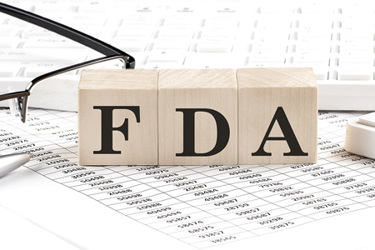Tips For Obtaining Your 510(k) FDA Clearance
By Rolland Carlson, Ph.D., CEO, Immunexpress

Our SeptiCyte RAPID clinical test received 510(k) FDA clearance indicated for the diagnosis of sepsis in adults. Sepsis is a life-threatening medical condition. Every minute counts for these patients in the ER and ICU. Clinicians in these settings need processes to distinguish sepsis patients from infection-negative systemic inflammation and only allocate ER/ICU space for treating urgent medical conditions, including sepsis. They also need to avoid unnecessary antibiotic treatments that contribute to the world health threat of antibiotic resistance.
We recognized the high unmet need for accurate and fast sepsis diagnosis – not binary but, rather, analog, with a risk scoring scale useful for diagnosis, determining severity, and predicting progression course. We addressed the unmet need by developing a clinical test for clinicians, hospital technicians, and medical systems that integrates with existing sepsis clinical practice and diagnostic workflows, as well as provides a 15-point risk score. Critically, we engaged these end users in the design phase to understand the necessary test performance (accuracy, speed, ease-of-use), price-point, regulatory/reimbursement criteria to support clinicians making treatment decisions based on the results, and fixed investment cross-share (existing instruments, trained personnel, workflows). Simply put, our test has breakthrough potential for transforming patient care, lowering associated medical costs, and decreasing the burden on the healthcare system.
We went into the FDA clearance process with eyes wide open and benefited from the advice of colleagues across the medical device, test, and diagnostic sectors. Even so, our team has learned numerous lessons along the way; here, I provide some salient points likely helpful to others.
Knowing When To Apply For 510(k) Device Clearance
The FDA 510(k) device clearance process is for medical use products and excludes over-the-counter devices and therapeutics. The FDA requires clinical trials demonstrating safety and efficacy, as well as good manufacturing practice (GMP) protocols evaluating reliability and robustness. Additionally, there are required standards for packaging and instructions.
The FDA is looking for safety and efficacy data, and the first step in providing that involves predetermination of a clinical endpoint and conducting a clinical trial to confirm that endpoint. The device is put through a rigorous analytical and clinical validation process so that physicians and patients can be confident that it is going to give consistent results.
Product development and research are also key in this process. Feasibility studies and confirmatory studies are conducted. Once those are complete, reproducibility studies are launched so GMP protocols are met.
Mapping Out An Application Strategy – Meeting The Design House
Once feasibility studies are completed, the next step is to clearly define the device’s design characteristics and goals. The FDA requires companies to proceed through a series of predetermined design gates that demonstrate the device is meeting these predetermined design goals. I call this process the “design house.” Once you are in the design house, it is very difficult to make changes and it is time to make sure that the product can meet standards. It is necessary to complete the design house process before initiating the submission process for a 510(k) clearance to the FDA. This process became quite familiar to us after our second device was cleared, the 1-hour SeptiCyte RAPID. In 2017, the company achieved FDA clearance for our 8-hour device, the SeptiCyte LAB.
Obtaining FDA clearance for SeptiCyte RAPID took considerable time and effort. We started working on the test in early 2018. A year later, we knew that we were about another year from when we would have a test that worked effectively and that could be ready to start going into the FDA’s design house. Immunexpress spent 2019 building the test and doing the appropriate and necessary analytical work. In 2020, we started our clinical trials, which took two and a half years.
Using The Pre-submission Process
I encourage companies to go through the FDA’s pre-submission process to avoid rejection of your application. You inform the agency that you are developing a test and launching a study that can fulfill safety and efficacy requirements. While the pre-submission process can take up to 180 days, costing you time and money, it could save you in the long run. However, if your device has already been cleared for one type of test and you want clearance for another test, pre-submission may not be necessary.
Entering The 510(k) Clearance Process
Once you submit to the FDA, the first step in the 510(k) clearance process involves sharing your documentation. The FDA will determine if that documentation meets requirements before reviewing it. Within 90 days, the FDA will respond with questions. The back-and-forth of your responses and additional rounds of questions from the FDA typically takes 180 days but can be significantly longer. You may get priority in the clearance process if the FDA designates your product as a breakthrough device. That means your device fulfills a need where there is nothing else. If you secure the designation, the FDA will fast-track the review.
Responding To The FDA Rejecting Your Application
If there is a deficiency in your application, the FDA is willing to work with you and put the review process on hold. This helps you submit what is necessary along the way, rather than having the FDA deny the application at the end of the process. This can save manufacturers considerable time and expense. So, it is essential to maintain contact with the FDA.
If this happens, the FDA reviewers may tell you about studies that they think you should have done, then you can go back, do those studies, and resubmit. The FDA will outline what is necessary to proceed. There is also an appeals process, which can be helpful.
Securing FDA Acceptance – What Is Next?
Following 510(k) clearance, post-market surveillance begins. The FDA expects post-market surveillance and expects the company to establish systems to monitor the process. Immunexpress uses a CAPA (corrective & preventive actions) system for post-market surveillance that monitors two areas: (1) routine manufacturing and product performance to identify errors and recurring issues, (2) customer complaints or inquiries. It is important to keep records of any issues.
If there is a recall or problems associated with the product, the FDA will require a review of documentation. It is up to the manufacturer to make sure documentation and post-market surveillance are available, along with manufacturing records.
Moving Forward With Product Launch
With checks and balance protocols in place, and your FDA clearance in hand, it is time for the product launch. That can be with your own salesforce or through a distributor. You will also need the necessary medical device product support expertise to support your customers, as well as a process to make sure that the product is reliable with preventive routine maintenance. If there is a system failure, you should have the ability to fix that or send a field technician to the customer. You should also have a scientific and medical affairs team to address the clinical relevance of the study and/or of the product while supporting it from a scientific and medical perspective. You will need commercial expertise to move into hospitals. It is key to have people capable of navigating the nuances of hospital systems and establishing the necessary contracts.
About The Author:
 Rolland Carlson, Ph.D., is CEO of Immunexpress, a molecular test company that focuses on improving outcomes for suspected sepsis patients and more broadly patients with acute host immune response conditions. He has 25+ years of extensive leadership in the molecular diagnostic space across business development, new product R&D and FDA approval, as well as global commercial and general management. Carlson joined Immunexpress in 2018 as CEO. Prior to that, he served as CEO Wafergen Biosystems (NASDAQ: WGBS), CEO at Asuragen for eight years and held several business development roles of increasing responsibility at Abbott Laboratories for over 20 years. He holds a bachelors and a doctoral degree from Southern Illinois University.
Rolland Carlson, Ph.D., is CEO of Immunexpress, a molecular test company that focuses on improving outcomes for suspected sepsis patients and more broadly patients with acute host immune response conditions. He has 25+ years of extensive leadership in the molecular diagnostic space across business development, new product R&D and FDA approval, as well as global commercial and general management. Carlson joined Immunexpress in 2018 as CEO. Prior to that, he served as CEO Wafergen Biosystems (NASDAQ: WGBS), CEO at Asuragen for eight years and held several business development roles of increasing responsibility at Abbott Laboratories for over 20 years. He holds a bachelors and a doctoral degree from Southern Illinois University.
